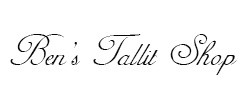This week we received an order that looked a bit odd to me: several tallit katan products sized for very small boys and thick Niputz Lishmah tzitzit strings to tie on them. I contacted the customer to clarify, and discovered that the order was placed by a very conscientious mother who has a few gaps in her knowledge of tzitzit. I'm posting the exchange here, because I think it might be helpful for other customers wondering which type of tzitzit strings to use.
This note was appended to the order:
Hi,
I am confirming that the two undershirts that I am ordering with tzitzit will have Sephardic windings of 10-6-5-6.
Please email and/or call with any questions.
Thank you.
Abby
I sent an email to Abby:
Tying Sephardic 10-5-6-5 is no problem, but your choice of tzitzit strings raised my brow. Are you sure you want to keep such a stringency with a little tyke?
She replied:
What about our choice of tzitzit strings raised your brow? I am
interested in learning more and don't understand your concern. If the
question is about the Sephardic winding 10-5-6-5, yes: our nusach is
very important to us, and this is part of it. We
want him wearing tzitzit in our tradition from the beginning. It is
part of helping him to develop a clear and consistent Sephardic
identity. If there is another aspect of the tzitzit strings that we
ordered that raised your brow, please let me know. Thanks!
P.S. Are you THE "Ben" of "Ben's Tallit Shop?"
In response to her P.S., I told confirmed my identity, to Abby, "guilty as charged," and explained to her as follows:
To prepare tzitzit for a customer, I need to know three things:
 United States Dollar
United States Dollar
 Shekel
Shekel
 Euro
Euro
 British Pound
British Pound
 Australian Dollar
Australian Dollar
 New Zealand Dollar
New Zealand Dollar
 Canadian Dollar
Canadian Dollar
